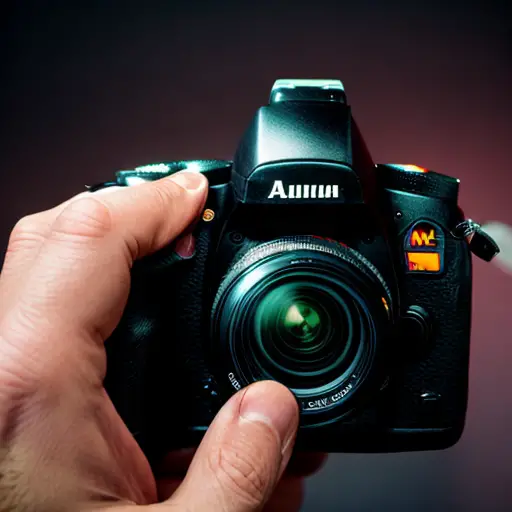Understanding Infrared Photography: Exploring the Basics
Understanding Infrared Photography: Exploring the Basics is like embarking on a quirky adventure where you can transform your digital camera into a magical infrared wizard. Picture this: you're strolling through a garden, capturing the world in a whole new light, quite literally! Converting your camera to infrared allows you to unveil hidden beauty, revealing a surreal realm where green foliage turns ghostly white and the sky becomes a dramatic canvas of deep blacks and ethereal whites. It's like stepping into a secret club where only the coolest photographers dare to venture. So, grab your screwdriver, unleash your inner mad scientist, and let's dive into the enchanting world of infrared photography!
Selecting the Right Camera for Infrared Conversion: A Comprehensive Guide
An interesting fact about converting a digital camera to infrared is that it involves removing the infrared-blocking filter present in most digital cameras. This filter is typically placed in front of the camera's image sensor to prevent infrared light from interfering with the visible light captured by the camera. By removing this filter, the camera becomes more sensitive to infrared light, allowing photographers to capture stunning and unique infrared images. This conversion process can be done by experienced individuals or specialized camera modification services, opening up a whole new world of creative possibilities in photography.
Selecting the Right Camera for Infrared Conversion: A Comprehensive Guide is like finding the perfect partner in crime for your infrared photography escapades. It's all about finding that one camera that's willing to undergo a radical transformation, embracing its inner infrared superhero. Think of it as a matchmaking process, where you seek out a camera with a compatible sensor that can handle the infrared magic. You want a camera that's up for the challenge, ready to shed its conventional colors and embrace the world of unseen wavelengths. So, grab your detective hat, dive into the world of camera specifications, and let's find the perfect candidate for your infrared conversion adventure!
Step-by-Step Conversion Process: Converting Your Digital Camera to Infrared

Step-by-Step Conversion Process: Converting Your Digital Camera to Infrared is like embarking on a DIY journey that will transform your camera into a mystical infrared powerhouse. Before you dive into this exciting adventure, make sure you have the necessary tools: a screwdriver, a steady hand, and a dash of patience. The first step is to disassemble your camera, carefully removing the outer casing to reveal its inner workings. It's like peeling back the layers of a technological onion, exposing the delicate components that will soon bring infrared magic to life.
Once you have access to the camera's sensor, the next step is to remove the infrared-blocking filter. This filter is like a gatekeeper, preventing infrared light from reaching the sensor and limiting your photographic possibilities. With a gentle touch, carefully detach the filter, making sure not to damage any surrounding components. It's like setting the sensor free, allowing it to embrace the full spectrum of light.
After removing the filter, it's time to replace it with an infrared-passing filter. This new filter acts as a gateway to the infrared world, allowing only those unseen wavelengths to pass through and reach the sensor. It's like giving your camera a pair of special glasses that can see beyond what the human eye can perceive. Carefully install the new filter, ensuring it's securely in place, and reassemble your camera with the same precision you used during the disassembly process.
Once your camera is back together, it's time to test its newfound infrared powers. Head out into the world, armed with your newly converted camera, and prepare to capture scenes that are both familiar and otherworldly. Watch as green foliage turns ghostly white, skies transform into dramatic canvases, and everyday objects take on a surreal glow. It's like stepping into a parallel universe, where reality is tinged with a touch of magic. So, grab your converted camera and let your creativity soar as you explore the captivating realm of infrared photography.
Mastering Infrared Photography Techniques: Tips and Tricks for Captivating Images
Fun fact: Did you know that you can convert a regular digital camera into an infrared camera by simply removing the infrared-blocking filter? This filter, also known as the hot mirror, is placed in front of the camera's image sensor to block infrared light and allow only visible light to pass through. By removing this filter, the camera becomes sensitive to infrared light, enabling you to capture stunning and unique infrared photographs. This process, known as 'full spectrum conversion,' can be done by professionals or even as a DIY project for adventurous photographers!
Mastering Infrared Photography Techniques: Tips and Tricks for Captivating Images is like unlocking a secret arsenal of creative possibilities with your newly converted camera. As you delve into the world of infrared photography, there are a few key techniques to keep in mind. Firstly, experiment with different lighting conditions to see how they affect your infrared images. Bright sunlight can create high contrast and dramatic scenes, while overcast skies can lend a dreamy and ethereal quality. Secondly, pay attention to composition and subject matter. Infrared photography has a way of highlighting textures and patterns, so look for interesting elements that will stand out in your images. Lastly, don't be afraid to play with post-processing. Infrared images often benefit from adjustments in contrast, channel swapping, and even adding a touch of color. So, embrace the unconventional, let your creativity run wild, and watch as your infrared images captivate and mesmerize.
